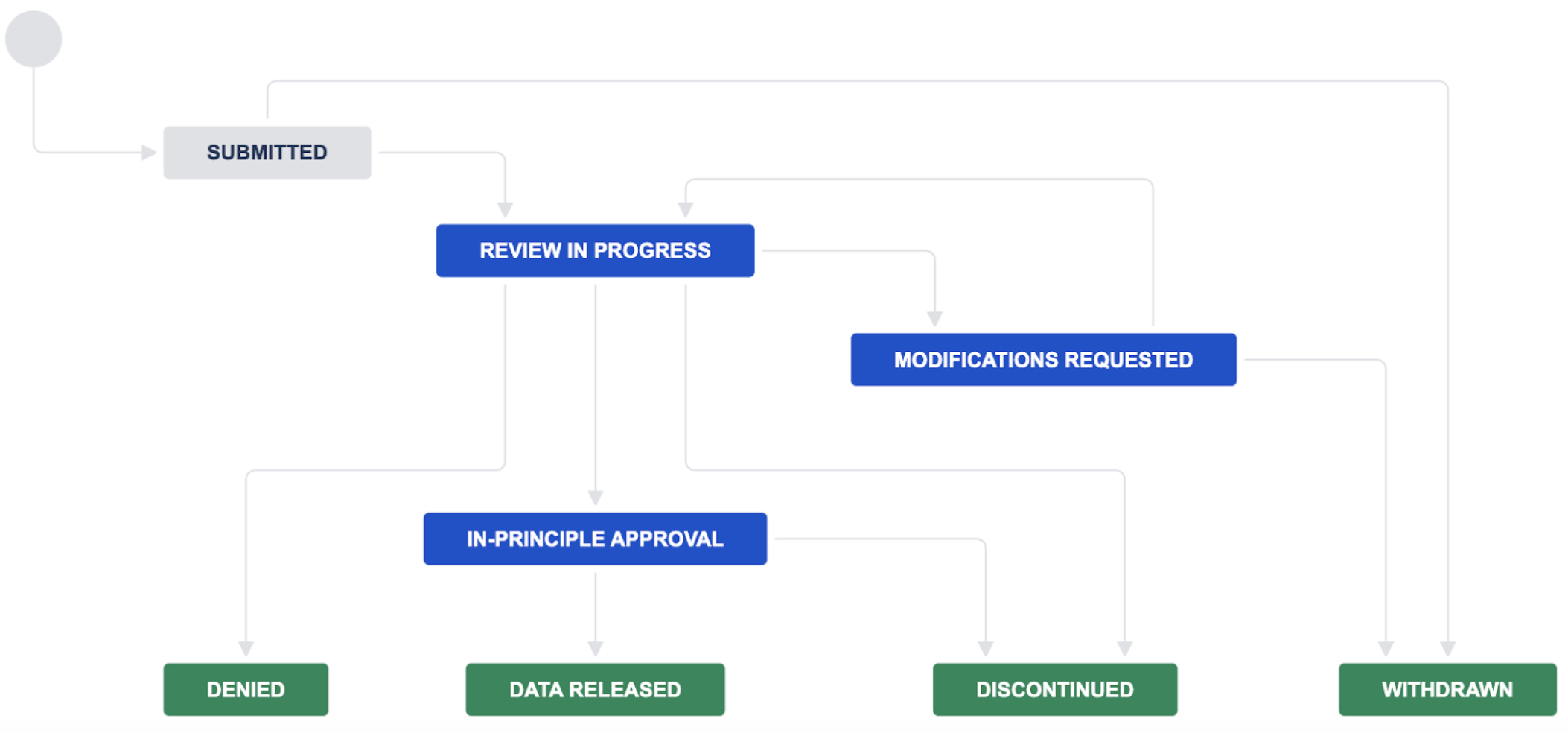General Information
Health Data Australia (HDA) helps researchers discover and access health data. We do not store the data itself here but provide descriptions of the data from our data publishing partners.
Using HDA, researchers can search these descriptions, find data of use to their research, then request access to it. The request will be sent to the owner of the data to review.
Data owners receive email notifications about new data requests and can then log into the HDA Data Request platform to review and respond. If the request is approved, the owner arranges for the researcher to be given access to the data.
Overview of Health Data Australia
Health Data Australia (HDA) contains descriptions of health datasets. These descriptions are provided by the data owners and the data itself is stored with them elsewhere. To get access to the data, researchers need to submit a request to the owner who will review the request and determine whether access can be granted.
The dataset descriptions (‘metadata’) contained on HDA help researchers understand the kinds of data that exist and assess whether a dataset may be of value to their research, without the need to actually access the data. In addition to metadata, data owners provide other documentation describing the data they hold, such as study protocols and data dictionaries.
Using HDA, researchers can search for data, save their searches, submit and manage data requests.
Overview of the HDA Data Request platform
The HDA Data Request platform allows data owners, custodians, or their delegates to receive and respond to data requests submitted by researchers via Health Data Australia.
The platform uses a standard high-level administrative workflow for tracking and responding to data requests while still allowing data owners to apply their own specific governance requirements for approving access to data.
Overview of the data request process
Different datasets listed on HDA have different governance and requirements for how access is granted. This information should be included in the listing of each dataset. To make accessing data easier, all datasets listed on HDA adhere to a common framework for responding to data requests.

Figure 1.1 Framework for responding to data requests
Different datasets listed on HDA have different governance and requirements for how access is granted. Some datasets may only be available to certain kinds of researchers or for certain purposes. There may be other conditions for using data such as how it is stored or requirements for collaboration. This information should be included in the listing of each dataset. In most cases, the owner will require a data sharing agreement to be completed before access is granted.
Although these conditions may differ, there is a common workflow for responding to data requests. Once a data request is submitted by a researcher, the workflow for responding is as follows:

Figure 1.2 HDA Data Request workflow
The steps in this workflow are designed to be flexible to different situations and governance requirements. The person receiving the data request (the ‘point of contact’ or ‘POC’) follows their own governance rules and liaises with the chief investigator, data access committee, or any other person responsible for reviewing the data request.
The POC uses the platform to record the progress of the request, ask the requestor for additional information or modifications to the request, and to record the final outcome. The requestor can use the platform to respond to the POC’s enquiries, and can also withdraw the request if required.
If the request is approved, the data owner and requestor will liaise directly to complete a data sharing agreement (if required) and to organise access to the data. These final steps occur outside the platform, but their outcome is recorded in the platform for future reference.
